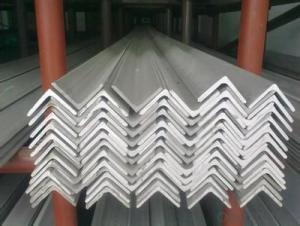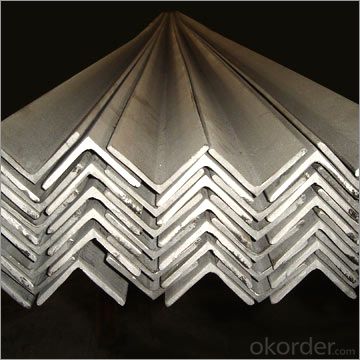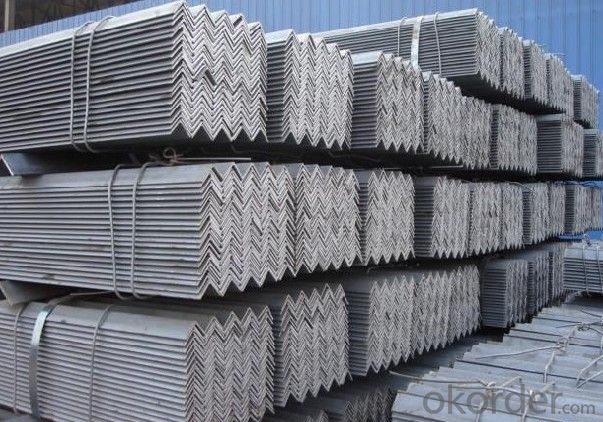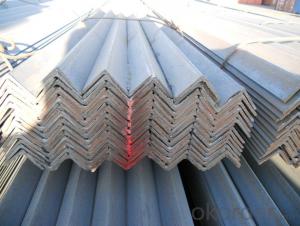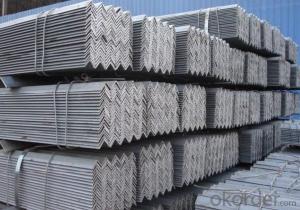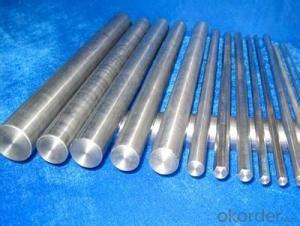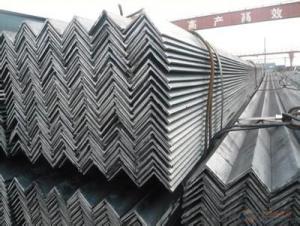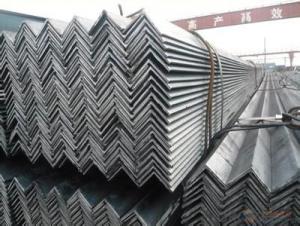Hot Rolled Steel Angel ASTM Or GB Q235 Or Q345
- Loading Port:
- Tianjin
- Payment Terms:
- TT OR LC
- Min Order Qty:
- 25 m.t.
- Supply Capability:
- 2000000 m.t./month
OKorder Service Pledge
OKorder Financial Service
You Might Also Like
Specification
Product Description:
OKorder is offering high quality Hot Rolled Steel Angel ASTM Or GB Q235 Or Q345 at great prices with worldwide shipping. Our supplier is a world-class manufacturer of steel, with our products utilized the world over. OKorder annually supplies products to European, North American and Asian markets. We provide quotations within 24 hours of receiving an inquiry and guarantee competitive prices.
Product Applications:
According to the needs of different structures, Angle can compose to different force support component, and also can be the connections between components. It is widely used in various building structures and engineering structures such as roof beams, bridges, transmission towers, hoisting machinery and transport machinery, ships, industrial furnaces, reaction tower, container frame and warehouse etc
Product Advantages:
Hot Rolled Steel Angel ASTM Or GB Q235 Or Q345 are durable, strong, and resist corrosion.
Main Product Features:
· Premium quality
· Prompt delivery & seaworthy packing (30 days after receiving deposit)
· Corrosion resistance
· Can be recycled and reused
· Mill test certification
· Professional Service
· Competitive pricing
Product Specifications:
Manufacture: Hot rolled
Grade: Q195 – 235
Certificates: ISO, SGS, BV, CIQ
Length: 6m – 12m, as per customer request
Packaging: Export packing, nude packing, bundled
Sizes: 25mm-250mm | ||||||||||||
a*t | ||||||||||||
25*2.5-4.0 | 70*6.0-9.0 | 130*9.0-15 | ||||||||||
30*2.5-6.6 | 75*6.0-9.0 | 140*10-14 | ||||||||||
36*3.0-5.0 | 80*5.0-10 | 150*10-20 | ||||||||||
38*2.3-6.0 | 90*7.0-10 | 160*10-16 | ||||||||||
40*3.0-5.0 | 100*6.0-12 | 175*12-15 | ||||||||||
45*4.0-6.0 | 110*8.0-10 | 180*12-18 | ||||||||||
50*4.0-6.0 | 120*6.0-15 | 200*14-25 | ||||||||||
60*4.0-8.0 | 125*8.0-14 | 250*25 | ||||||||||
FAQ:
Q1: Why buy Materials & Equipment from OKorder.com?
A1: All products offered byOKorder.com are carefully selected from China's most reliable manufacturing enterprises. Through its ISO certifications, OKorder.com adheres to the highest standards and a commitment to supply chain safety and customer satisfaction.
Q2: How do we guarantee the quality of our products?
A2: We have established an advanced quality management system which conducts strict quality tests at every step, from raw materials to the final product. At the same time, we provide extensive follow-up service assurances as required.
Q3: How soon can we receive the product after purchase?
A3: Within three days of placing an order, we will begin production. The specific shipping date is dependent upon international and government factors, but is typically 7 to 10 workdays.

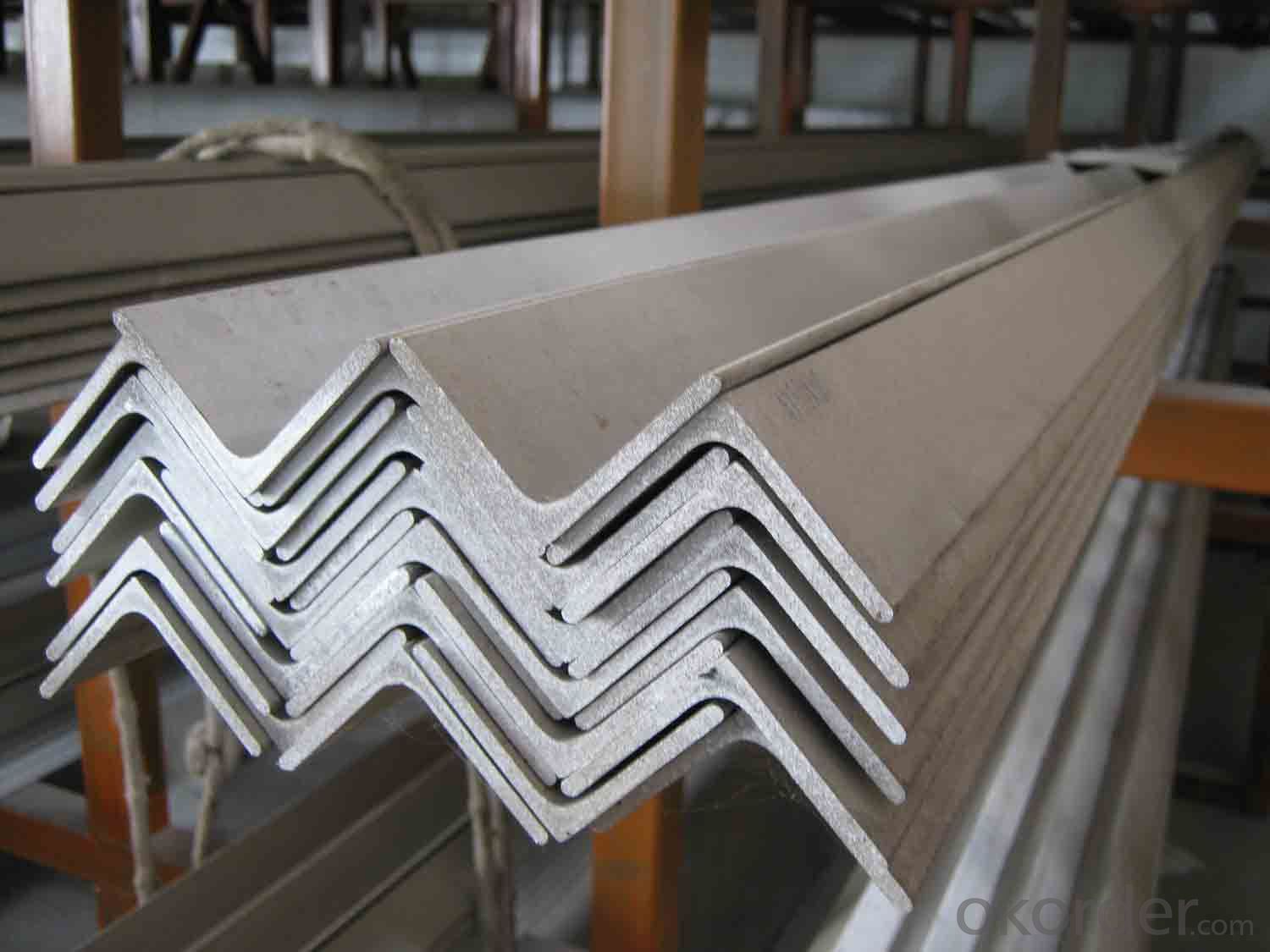
- Q: Can steel angles be used for modular furniture or fixtures?
- Yes, steel angles can definitely be used for modular furniture or fixtures. Steel angles are versatile and strong structural components that can be easily incorporated into modular furniture designs. They provide stability and support to the overall structure, making them ideal for creating modular pieces that are sturdy and durable. Steel angles can be used as corner brackets or supports for shelves, cabinets, or other modular components. They can be easily cut, welded, or drilled to fit specific design requirements, allowing for flexibility in creating different configurations or sizes of modular furniture. Additionally, steel angles can be powder coated or painted in different colors to match the desired aesthetic of the furniture or fixtures. The use of steel angles in modular furniture or fixtures also ensures longevity, as they are resistant to wear and tear, corrosion, and impact. This makes them suitable for both indoor and outdoor applications. Moreover, steel angles are readily available and cost-effective, making them a practical choice for modular furniture or fixture manufacturing. In conclusion, steel angles are an excellent choice for creating modular furniture or fixtures due to their strength, versatility, and durability. They provide stability and support to the structure, can be easily customized, and offer long-lasting performance. Whether it is for residential or commercial use, steel angles can be utilized to create modular furniture or fixtures that are both functional and aesthetically pleasing.
- Q: What are the different surface finishes for steel angles?
- There are several different surface finishes available for steel angles, depending on the desired aesthetic and functional requirements. Some of the most common surface finishes for steel angles include: 1. Mill Finish: This is the most basic and untreated finish, which is obtained directly from the mill without any additional treatment. It has a rough and dull appearance, with visible mill scale and imperfections. 2. Hot-dip Galvanized: In this process, the steel angle is immersed in a bath of molten zinc, which forms a protective coating on the surface. This finish provides excellent corrosion resistance, making it suitable for outdoor and marine applications. 3. Powder Coated: Powder coating involves applying a dry powder to the steel angle and then curing it through heat, forming a durable and smooth finish. It offers a wide range of color options and provides good corrosion resistance and aesthetics. 4. Painted: Steel angles can be painted using various types of paint, such as enamel, epoxy, or acrylic. This finish not only enhances the appearance but also provides some level of protection against corrosion. 5. Stainless Steel: Steel angles can be made from stainless steel, which has a natural, corrosion-resistant surface finish. Stainless steel angles are commonly available in a brushed or polished finish, which provides a clean and shiny appearance. 6. Galvannealed: This is a specialized surface finish that involves galvanizing the steel angle and then heat treating it to form a matte, grayish finish. It offers good corrosion resistance and paint adhesion, making it suitable for applications requiring both. These are just a few of the different surface finishes available for steel angles. The choice of finish will depend on factors such as the intended use, environment, and desired appearance of the steel angle.
- Q: Can steel angles be used in transportation or infrastructure projects?
- Yes, steel angles can be used in transportation or infrastructure projects. Steel angles are commonly used in construction due to their strength and durability. They are often used to provide structural support and stability in various applications such as bridges, buildings, highways, and railways. In transportation projects, steel angles can be used for constructing vehicle ramps, guardrails, and support structures for overhead signs. In infrastructure projects, they can be used for constructing retaining walls, foundations, and supporting structures for utility installations. The versatility and reliability of steel angles make them a popular choice in these types of projects.
- Q: Can steel angles be used in outdoor applications?
- Yes, steel angles can be used in outdoor applications. Steel angles are known for their strength, durability, and resistance to corrosion, making them suitable for various outdoor projects such as construction, infrastructure, and outdoor furniture.
- Q: Can steel angles be used in sports facilities or stadium constructions?
- Sports facilities and stadium constructions can make use of steel angles. These are widely utilized in the construction industry due to their versatility, strength, and durability. Steel angles serve various purposes in sports facilities or stadium constructions. One of the main uses of steel angles in sports facilities and stadium constructions is for framework and support structures. They are capable of creating seating areas, walkways, stairs, and entrances. Offering excellent structural support, they can withstand heavy loads, making them suitable for accommodating large crowds and ensuring the safety of spectators. Steel angles can also be employed in the construction of different sports equipment. For example, they can serve as the framework for basketball hoops, soccer goals, or volleyball nets. This ensures stability and durability during intense gameplay. Additionally, steel angles can be utilized for constructing fencing or barriers around sports fields or tracks, providing safety and security for players and spectators alike. Moreover, steel angles are commonly used in installing lighting systems in sports facilities and stadiums. They can be utilized to mount floodlights, scoreboards, or other necessary equipment for proper illumination during games or events. To conclude, steel angles play a vital role in sports facility and stadium constructions. Their strength, versatility, and durability make them a dependable choice for various applications, including framework and support structures, sports equipment, and lighting systems.
- Q: What's the size of the 50 angle iron?
- Is the grading angle and side angle and side angle, it has three sides, say according to the above 50*50*3, this is an equal angle on both sides, tianxiangcheng, 50mm, high 3mm.
- Q: Can steel angles be used for HVAC ductwork?
- No, steel angles are not typically used for HVAC ductwork. Ductwork is commonly made from galvanized steel sheets or flexible materials such as aluminum or fiberglass. Steel angles are more commonly used for structural support or framing purposes.
- Q: 304 what does angle iron stand for?
- 304 stainless steel applications:304 is the most widely used stainless steel, heat-resistant steel. Used in food production equipment, chemical equipment, nuclear energy, etc..
- Q: What are the maximum allowable lengths for steel angles?
- The maximum allowable lengths for steel angles can vary depending on the specific application and industry standards. However, in general, steel angles can be manufactured and supplied in standard lengths ranging from 20 feet to 40 feet. These lengths are commonly used in construction, engineering, and fabrication projects.
- Q: Are steel angles corrosion resistant?
- Steel angles are generally not corrosion resistant unless they are specifically designed and treated to be so. Regular steel angles are made from carbon steel, which is susceptible to corrosion when exposed to moisture, oxygen, and other corrosive elements. However, there are stainless steel angles available that have a higher resistance to corrosion due to the addition of chromium and other alloying elements. These stainless steel angles are commonly used in environments where corrosion is a concern, such as marine or industrial applications. It is important to consider the specific type and grade of steel angle being used to determine its corrosion resistance capabilities.
Send your message to us
Hot Rolled Steel Angel ASTM Or GB Q235 Or Q345
- Loading Port:
- Tianjin
- Payment Terms:
- TT OR LC
- Min Order Qty:
- 25 m.t.
- Supply Capability:
- 2000000 m.t./month
OKorder Service Pledge
OKorder Financial Service
Similar products
Hot products
Hot Searches
Related keywords
